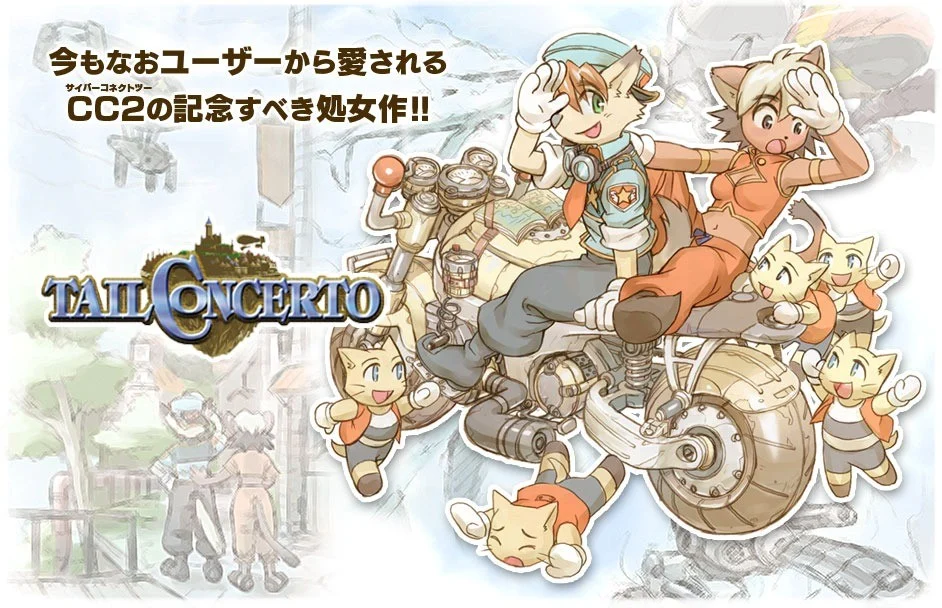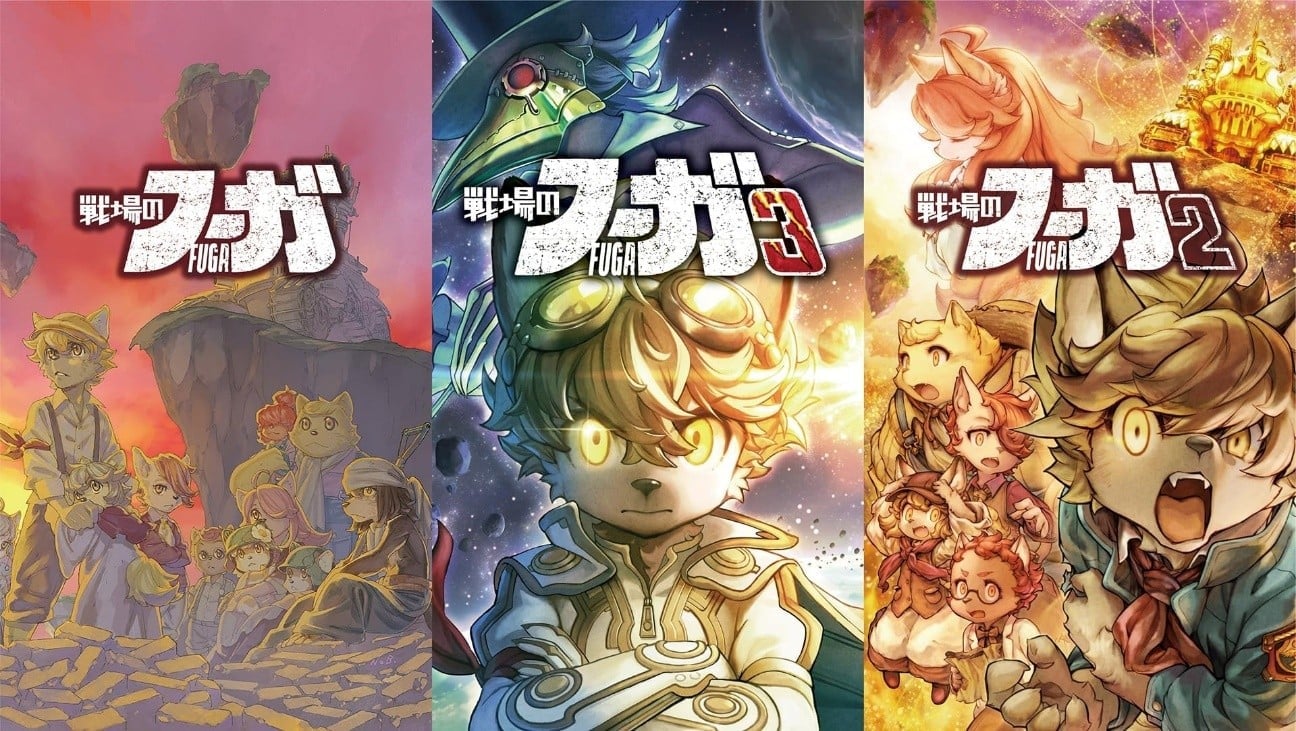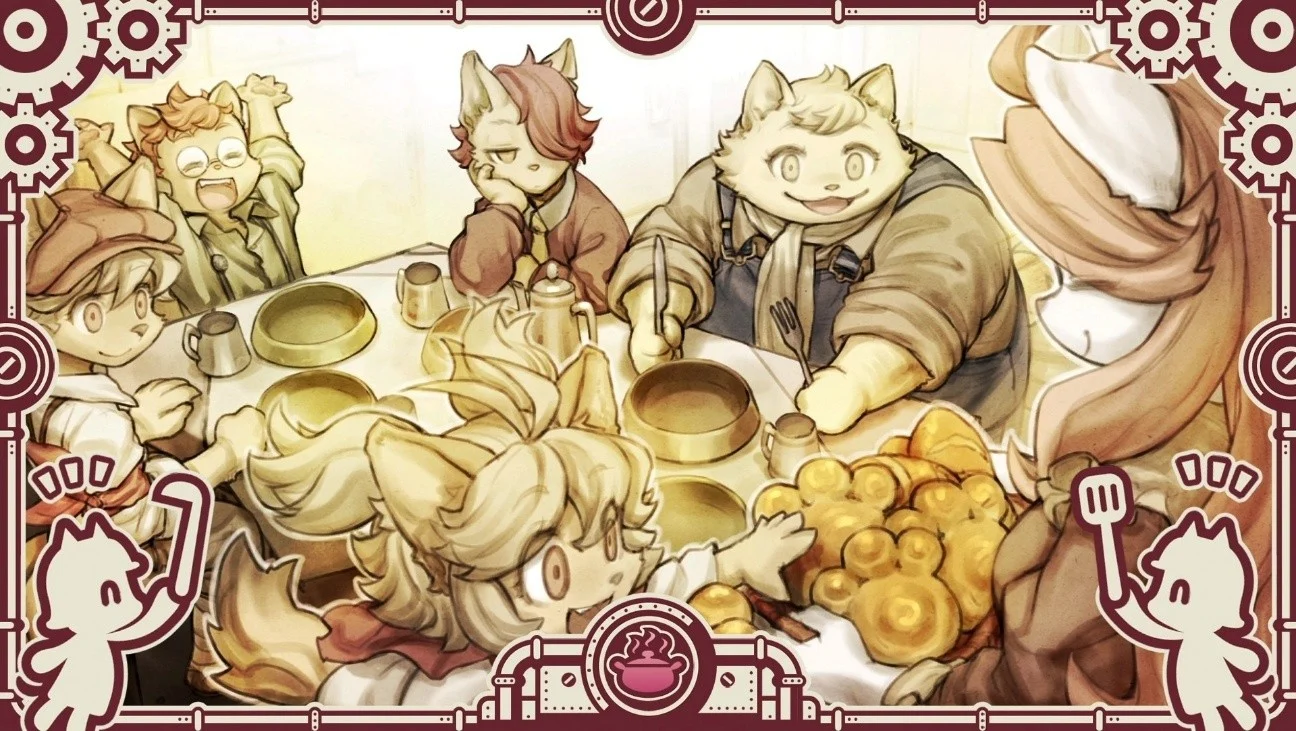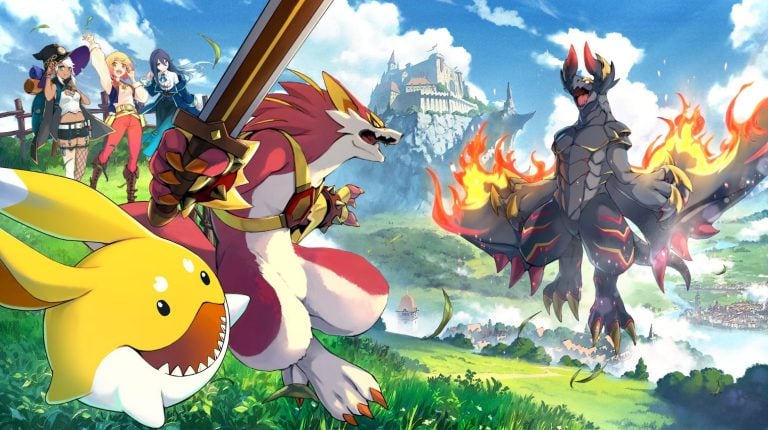CyberConnect2 released Fuga: Melodies of Steel 3, the finale of the Fuga: Melodies of Steel TRPG trilogy, on May 29 for the PC (Steam/Epic Games), Nintendo Switch, PS4/PS5 and Xbox One/Xbox Series X|S.
Set in a world inhabited by anthropomorphic cats and dogs, the Fuga: Melodies of Steel series tells the story of children who, having lost their homes and families to war, are thrust onto the battlefield. Despite the cute appearance of its characters, the franchise tells a rather dark drama about survival and sacrifice.
Fuga series developer CyberConnect2 has consistently pursued its passion for furry-themed games alongside the contract development work it does for other companies. Why are they so deeply devoted to creating furry content? AUTOMATON spoke with CyberConnect2’s representative, Hiroshi Matsuyama, to find out. Be sure to check out part one of this interview too, where we talk about the Fuga franchise’s sales and nuanced depiction of “cruel” themes.
Why the obsession with furries?
―To start off, why are you and CyberConnect2 so devoted to furries?
Matsuyama:
CyberConnect2 has done a lot of contract development work on Weekly Shonen Jump titles like Naruto, JoJo’s Bizarre Adventure, Dragon Ball Z, and Demon Slayer over the years. But between those, we’ve also been working on our own IPs. About 30 years ago, when we started out as a 10-person company called CyberConnect, the very first game we created in-house was Tail Concerto (1998), an action-adventure platformer themed around furries.

―So it was where everything started for CyberConnect2. Are furries an important theme for you?
Matsuyama:
I would say it’s the foundation of CyberConnect2. About 10 years ago, we celebrated our 20th anniversary. Many game companies don’t last that long – so I thought, if we’ve made it this far, surely we won’t go out of business overnight. That made me think of starting something new under our own brand.
So instead of just doing contract development for other companies, we started self-publishing. When the time came to discuss what we were going to make, I figured I should lead by example, so I came up with the proposal for Fuga: Melodies of Steel – a game set in the same world as Tail Concerto and Solatorobo: Red the Hunter – or what we call the Little Tail Bronx universe. That’s how the Fuga series started.
Now that the trilogy is reaching its finale, the team and I really feel like we’ve managed to achieve what we originally set out to do.

―Since the Fuga: Melodies of Steel project was launched at your initiative, was adhering to the furry aesthetic your choice?
Matsuyama:
Yes, mine and a portion of the team’s (laughs).
―Was it more about inheriting the identity you established with Tail Concerto, or simply a “let’s just make what we love” approach?
Matsuyama:
It was both. Personally, I was greatly influenced by the anime Sherlock Hound. But even prior to that, I loved not only furry- but animal-centric shows like Osamu Tezuka’s Kimba The White Lion. As a kid, I found it easier to empathize with works that depicted animals rather than other boys and girls.
I was drawn to those kinds of worlds throughout my childhood, and then when I encountered Sherlock Hound – it was like everything just clicked into place for me. I remember thinking, still a child, that a masterpiece had started airing. But then it got cancelled, and I was in complete disbelief. The worldbuilding, the theme song, the art – I couldn’t understand why other people didn’t get it. I was frustrated for a while after that.
Later, when I was in high school, a show called Uchūsen Sagittarius started airing. Technically, it was more about aliens than about furries, but I was entranced by it. However, just like Sherlock Hound, it didn’t resonate at all with the general public.
These experiences made me start questioning whether I was the weird one, whether I was out of sync with what the rest of the world enjoyed. While I was a kid, I really believed that to be true. But when I became an adult, I snapped out of it. I decided that I wasn’t wrong – the world was.
―So growing up, furry-themed content helped you get over this gap you felt with the rest of the world?
Matsuyama:
Yeah, I realized the world just hadn’t caught on to the appeal of furry content yet. I started looking at things from the perspective, “Maybe I’m just ten years ahead of my time.” From there, I started wondering about who would be the one to make a change. How, and when? Eventually, I decided, “Let’s just do it ourselves.”
―So it was your obsession with furries that started everything, Matsuyama.
Matsuyama:
No, no, it wasn’t just mine! (laughs) Sure, I took the lead, but the team is just as passionate, we all think of it like “If we’re going to make a game, it’s got to be a furry game.” That’s why we end up making one furry game every 10 years.
―So it’s like you get a returning itch you have to scratch every 10 years?
Matsuyama:
We really can’t give it up! We made Tail Concerto first, then Solatorobo 10 years later, and finally started working on Fuga after another 10 years.

―When you get new employees, do they mention liking furries? Conversely, do you ask applicants during interviews?
Matsuyama:
Not at all – we don’t ask, and they don’t mention it either. Almost everyone comes in saying they love Naruto: Ultimate Ninja, or they want to make Demon Slayer or Dragon Ball Z games, or how they’ve loved the .hack series since childhood and can’t forget about it. Of course, we’re always happy to hear that, but no one ever mentions Tail Concerto or Solatorobo when applying!
On the other hand, after they join and some time has passed, they realize what’s going on in the company. They realize there’s a furry game called Fuga: Melodies of Steel being made. And that’s when they start coming forward, showing interest. And I’m like, “What’s going on, why are you suddenly wagging your tail?” That’s when they confess. “Actually, I’ve always loved furries.” For some reason, no one says it upfront.
Everyone keeps quiet about it at first, but once they find out we’re working on furry games, they come and ask me “How can I get on that team?” Whether it’s within CyberConnect2 or on a global level, there’s this awareness that liking furries is very “out there.” However, that’s exactly what makes it worth pursuing for me. I really believe we can push it further into the mainstream.
That said, I feel like there’s some kind of medical condition that makes people pressured to say they love Weekly Shonen Jump when applying for CyberConnect2.
―Oh, I kind of get where they’re coming from. CyberConnect2 has a strong reputation for working on the Jump titles you just mentioned, so your brand inevitably gets associated with Weekly Shonen Jump.
Matsuyama:
Yeah, I call it the “CyberConnect2 Syndrome.” I think this makes it even harder for our new hires to say “I like furries” right off the bat. But then when we take them for a company get-together and dig a little deeper, they suddenly come out with it. That’s why I’d like to make the Fuga series even bigger globally and create a world where people can feel comfortable saying “I love furries” from the get-to.
—So your agenda is to give furry fans the freedom to be open about it? And on a global level.
Matsuyama:
That’s right. We need to be the ones to lead the way – there’s no alternative. I feel like with manga and anime, the hurdles are still pretty high, but with games, it’s a lot easier to cross borders.
Before diving into Fuga: Melodies of Steel 3, you can refresh your memory using Fast Mode
―And all of this has culminated with the release of Fuga: Melodies of Steel 3.
Matsuyama:
Although each entry in the Fuga series might seem like a standalone title, the story actually continues from Fuga 1 to 2 and now to 3, kind of like a shonen manga split into separate story arcs. It’s a connected narrative, like our .hack series.
As such, many of the plot threads we laid out in Fuga 1 get resolved in 2 and 3. Our fans have been picking up on that too, connecting the dots between the games and enjoying them the way you’d enjoy a shonen manga series.
And naturally, we plan to deliver on their expectations – all the narrative threads we deliberately left untouched in Fuga 1 will be picked up in 3. The fact that fans are already hyped and creating fan art before the release really motivates us, and I hope players will be satisfied with how everything plays out.
—It’s been a while since I played Fuga: Melodies of Steel 1. I honestly don’t remember all the details, so playing everything from the start would probably make it more enjoyable.
Matsuyama:
That’s right, and that’s precisely what Fast Mode is for. You can skip through the battles, get rid of enemies with Reaction Bombs, and quickly progress through the story. You’ll clear the game in about 1/4 or even a fifth of the regular playtime. So even if you already played Fuga 1 back in the day, I encourage you to revisit it in Fast Mode.
—I feel like a key part of the Fuga series are its complex game mechanics and tough choices. The decision-making is a huge part of the appeal, so adding a mode that lets you experience only the story feels like quite a bold move.
Matsuyama:
Yeah, when I first brought up the idea of a Fast Mode to the team, the reactions were quite mixed. Some of them were like, “Wait, are we just throwing out all the hard work we put [into the gameplay]?” and “Is this not an RPG? What do you mean battle skipping?” After much discussion, I somehow got them on board.
―(laughs)
Matsuyama:
I mean, we’re asking players to go through two full RPGs that each take 15 to 20 hours to clear before jumping into Fuga: Melodies of Steel 3 – that’s a lot. Of course, I would be thrilled if people played the whole thing, but I’m sure there are players who just want to briefly revisit the story and dive right into the third game. There are probably also folk who started Fuga 1 or 2 but perhaps stopped somewhere mid-way through. That’s why I pushed to include Fast Mode. Thanks to director Niizato (Hiroto Niizato), who fine-tuned the mode, we ended up with a really solid system. I hope players use it to the fullest.
—I personally love how the Fuga series keeps getting updates post-release, even for past entries.
Matsuyama:
Thank you, that’s something we’ve been very intentional about. To be honest, the development side was eager to finalize Fuga 1 a lot sooner. But I insisted on keeping the project open and continuing with updates even as we started work on Fuga 2. And now, we’re doing the same with Fuga 3. As a result, the games have kept evolving as we work on them in parallel. The team has worked really hard to make this happen.
There won’t be a Fuga: Melodies of Steel 4. But…
—Compared to the previous two entries, would you say that Fuga 3 still has strong furry elements?
Matsuyama:
Yes, the furry aspect is, of course, alive and well. But above all, I want people to focus on the story. As the finale of the trilogy, our mission with Fuga 3 was to tie up all the loose ends we’ve been laying out. The furry aesthetic and gameplay are still there, but more than that, I hope players experience the payoff as the epic narrative reaches its conclusion. I think that when you see the final scene, it’ll feel like nothing you’ve ever experienced before.
―I’m guessing Fuga 3’s endings won’t have any secrets?
Matsuyama:
There will be a bunch of them, actually. I mean, the game has 19 different endings!
―Oh? I assumed there wouldn’t be any more secrets with it being the final entry.
Matsuyama:
All I can say is good luck (laughs). But yes, the Fuga series will wrap up properly with the third game. There will be no Fuga 4.
―So, no chance of you coming up with a faint silhouette for a Fuga: Melodies of Steel 4 if the stars align?
Matsuyama:
…I’ll refrain from commenting.
―Oh come on! (laughs)
Matsuyama:
I’m telling you, there is no Fuga 4! There is no Fuga 4…but.
―So there’s something you’re plotting behind the scenes.
Matsuyama:
There is…
Spreading furry culture together with fellow fans
—Finally, do you have a message for furry fans or potential furry fans out there who are interested in Fuga 3?
Matsuyama:
I’m not sure how many people actually know this, so I’d like to mention it here. If you look up the term “kemono” (Japanese term for anthro/furry characters) or “kemonā” (Japanese term for anhro/furry fans) and go to the Wikipedia section explaining their origin – one of the theories listed is that the words became popularized after they were used in the PS2 game .hack//G.U., which we released in the 2000s.
―That’s fascinating.
Matsuyama:
Right? Although it’s hard to say where the terms really originated, CyberConnect2 has been using the word “kemonā” in game scenarios since the .hack series, and I think it really started gaining traction in various spaces from there. We’ve been working on spreading the culture of furry enthusiasts from the beginning. Brainwashing people, even (laughs).
―When you say “we,” who is it that’s been doing it with you?
Matsuyama:
All of the people who love the furry community.
―That’s a large number of people you’ve just made into your allies.
Matsuyama:
Well they are, we’re all a part of this! I know that furry content is generally considered niche or unconventional, but we truly believe that one day, it’ll go mainstream – that belief lies behind all our work so far. And I think the people reading this right now are the ones who’ll be there to witness that moment. Fuga: Melodies of Steel 3 marks the end of the series, but I hope we can continue to grow this furry-loving culture together. And to us, you’re already part of the family.
―So you consider yourselves a community. Not sure if this is a great note to end on, but with the furry genre still being kind of a sensitive topic, I’m honestly a bit nervous about this article getting backlash.
Matsuyama:
Yeah, I’ve got that feeling too actually.
―Wait, you do?
Matsuyama:
Well, if it goes up in flames, let’s burn together.
―Please don’t say that! Anyways, thank you for your time today.
Fuga: Melodies of Steel 3 releases May 29 for the PC (Steam/Epic Games Store), Nintendo Switch, PS5/PS4 and Xbox Series X|S/Xbox One.






These games are the very definition of passion and soul. You will NOT find this sort of thing in AAA games aimed at the general public. Please give the series a try, you will not regret it.
hey. i just found out about your site today and you already have a new fan and thanks for this interview since i’m a furry, it’s good to have more exposure to our community so thanks and you also helped put these games on my radar even if i knew about tail concerto and solatorobo already. woof rawr hehe <3